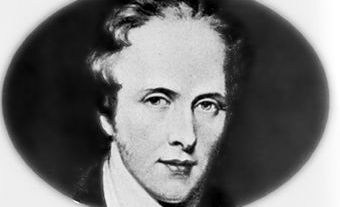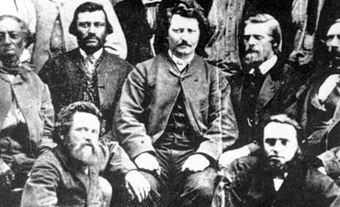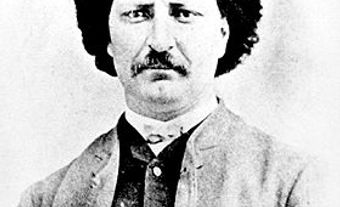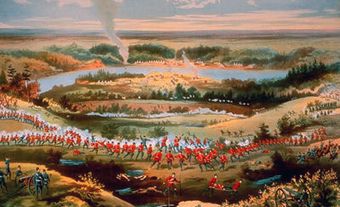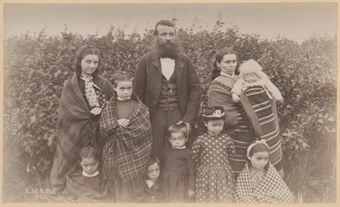The Red River Resistance happened in 1869–70. It took place in the Red River Colony in Manitoba. The leaders were Métis. In 1869, the Canadian government took control of Rupert’s Land. They did not consult with the Métis. The Métis worried that their land and culture could be threatened by this. After the resistance, the province of Manitoba was created around Red River. One well known leader of the Métis during this time was Louis Riel. He is a very controversial figure in history. Some think he is a hero. Others think he is a villain.
(This article is a plain-language summary of the Red River Resistance. If you are interested in reading about this topic in more depth, please see our full-length entry, Red River Resistance.)
Red River Colony
The Red River Colony was located where the Assiniboine River and the Red River meet. (The city of Winnipeg was later built there.) It was founded in 1812 by Thomas Douglas. He was the 5th Earl of Selkirk. The early settlers in Red River were from Scotland. The Red River was an important location for the fur trade. Two of Canada’s most important fur trading companies had outposts there: the North West Company and the Hudson’s Bay Company. This area was previously controlled by the Assiniboine people. They are also known as the Nakoda. In the early 1800s, Ojibwe, Cree and Métis people also lived in the Red River area. The Métis were not only fur traders. They were also farmers and buffalo hunters as well. After 1836, the population was mostly Métis.
Seeds of the Resistance
The federal government did not negotiate with the Métis before the government took control of Rupert’s Land. This is one of the main causes of the Red River resistance. It seemed very unfair to the Métis because they considered this area to be their home. Another cause of the resistance was that Protestant settlers had begun to move to the Red River Colony. This was very concerning to the Métis because they were Catholic. The new settlements and the lack of concern of the federal government, made the Métis to fear that they could lose their land, their religion and their culture.
Resistance and Louis Riel
The uprising started after the federal government surveyed land in the Red River Settlement. This made many Métis think that Ottawa would take their land. Louis Riel became the leader of the Métis. He and his followers stopped the land-survey group from entering the colony. So, Ottawa could not take control of the colony. It had planned to in December 1869. After stopping the survey team, the Métis took control of Upper Fort Garry by force. This was an important HBC trading post. Then, under the leadership of Riel, the Métis formed a provisional government in December. The goal was to make Ottawa negotiate with the Métis.

Riel’s plan seemed to be working. Ottawa decided to negotiate with him. Many Protestants in Ontario disagreed with Ottawa. They were enraged when Riel executed Thomas Scott, one of the prisoners at Fort Garry. This did not stop Ottawa, which sent soldiers to Red River. Ottawa did not give amnesty to Riel and the Métis leaders. Louis Riel left Canada to live in Montana for many years. In the spring of 1870 Ottawa recognized the rights of the Métis. Then on May 12 it created Manitoba. The Métis were given ownership of their land. And other land was given for Métis children. Eventually, a large percentage of Métis lost the title to their land. This ultimately contributed to another Métis uprising called the North-West Resistance in 1885. (See North-West Resistance (Plain-Language Summary).)

 Share on Facebook
Share on Facebook Share on X
Share on X Share by Email
Share by Email Share on Google Classroom
Share on Google Classroom
